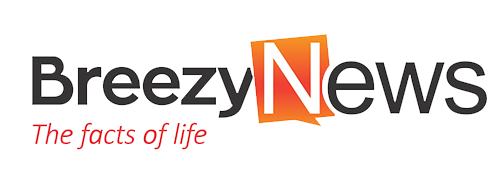Everything you do or say is public relations – Author unknown
In 2016 a notable son of Africa, Prof Patrick. L. O. Lumumba was invited to speak on the theme, Unleash the Power of Public Relations, with sub themes, Dangers of a Single Story, and Communication and Reputational Crises in Africa, at the 16th edition of the NECCI PR Roundtable. It is instructive and very interesting to note that this theme is even more relevant today than it was then. That is how predictive and powerful public relations can be.
The Mexican statement, which defines public relations as “the art and science of monitoring and analysing trends, predicting their consequences, counseling organisational leaders and implementing planned programmes of action that can serve both the organization and the public interest”.
At a glance, the definition clearly shows that Artificial Intelligence (AI) has its limitations as PR involves building relationships, managing communications, and shaping public perception, which often requires human judgement, creativity, and emotional intelligence. No matter the algorithms that an AI has been inputted with, for as long as it does not have emotions, it cannot feel, nor make human judgements; it can never take over or wipe out the public relations functions.
Just like every other tool we have had in the past, AI only has the capacity to automate certain aspects of our work. In spite of the advancements of AI, public relations specialists establish, maintain and build relationships with an organisation’s target audience, the media, relevant trade media, and other opinion leaders. This is a continuous exercise that AI can never do.
No doubt AI can easily create an automotive answering machine or AI-powered “chatbot” to respond to basic enquiries from customers, but the continuous process of engagement and the emotions that go with it can only be a human function. PR is in the business of instilling and maintaining client confidence and this requires the development of specific skills in managing emotions.
Liz Yeomans (2007) emphasised the important role of emotions in rational decision-making and the emotionally-demanding nature of most public relations work. She further argues that, in providing a PR service, practitioners are
performing the skills of emotional labour. Emotion is an integral aspect of public relations even though we do not acknowledge it as often as we should.
She has gone further to provide initial theorisation on the role of emotions in public relations and why women are perceived as better PR practitioners, describing emotion as a vital but “inadequately recognised phenomenon” in public relations research.
While emotion may have received limited attention until recently, substantial public relations research has focused on related concepts and utilised such concepts in explaining public relations outcomes. Recent findings indicate that the strategic use of affect in public relations messaging, including the use of emotional appeals, enhances perceived credibility, authenticity, and engagement. This, for now, AI is unable to achieve.
This exercise is not to reduce the contributions of AI. In actual fact, AI can augment what the practitioners do. AI can make the job of the PR practitioner easier and more accurate especially in certain and specific areas like data analysis, media monitoring, content creation, and social media management. For example, AI can analyse large volumes of data to identify trends, sentiment analysis, and gather insights to inform PR strategies. It can also automate routine tasks like scheduling social media posts or generating basic reports.
Interestingly AI can analyse sentiments but it is not sentimental in any way. That is why you cannot impute a question to an AI that wants to find out what it perceives or feels! It has no feeling. It has no warmth. These are the strong and invaluable strength of public relations.
PR cannot die as it remains an age-long relationship strategy of all cultures and it keeps growing and today more dynamic than when our forefathers used it.
As we celebrate this year’s World PR Day, practitioners must focus on harnessing the use of AI rather than waste time on the possibility of it taking over the humans. The focus should be on how PR practitioners can effectively make use of AI to enhance their work in this era of digitisation. How, for instance, can we use AI in the area of crises
management which forms a very crucial part of our portfolio? How can we use AI to tailor and customise our messaging to specific audiences and or stakeholders? How can we enhance our creativity with the use of AI and so on and so forth?
We must focus on coming up with disruptive ideas that will continue to make us relevant. To this end, we must do
more research on personality traits and the psychology of emotions and motivations and how they affect relationships. We must focus on building a unified global agenda towards making the world understand and utilise PR better.
While the argument of whether or not AI is taking over the job of public relations continues, I will like to conclude with a summary supplied by AI itself advising PR practitioners to remember that “AI is a tool and not a substitute for human expertise. They should carefully evaluate and interpret the insights provided by AI systems, applying their experience, judgement, and ethical considerations to make informed decisions.
The integration of AI should complement and enhance the work of PR professionals, allowing them to focus on strategic thinking, relationship building, and managing complex communication challenges.
Furthermore, as immediate past president of the Nigerian Institute of Public Relations (NIPR), Oladele Rotimi succinctly puts it, “content is a key factor in mapping out the variance and competitiveness between the human and AI”. The human originates and also programmes for AI to act and compete with the human. AI with all its strength is still a product of human being with can only survive with remedial courses of action.
Ali-Balogun is a Fellow and member of the Governing Council of the NIPR







